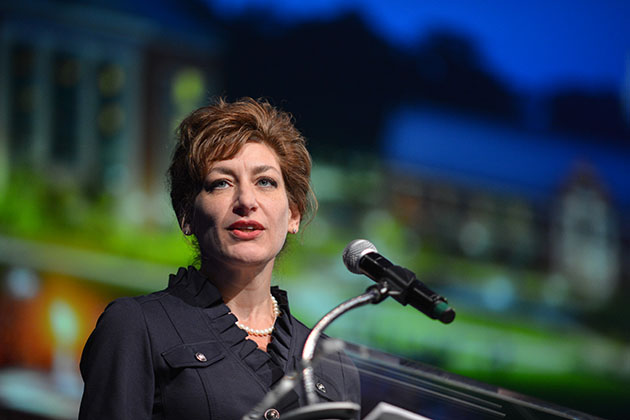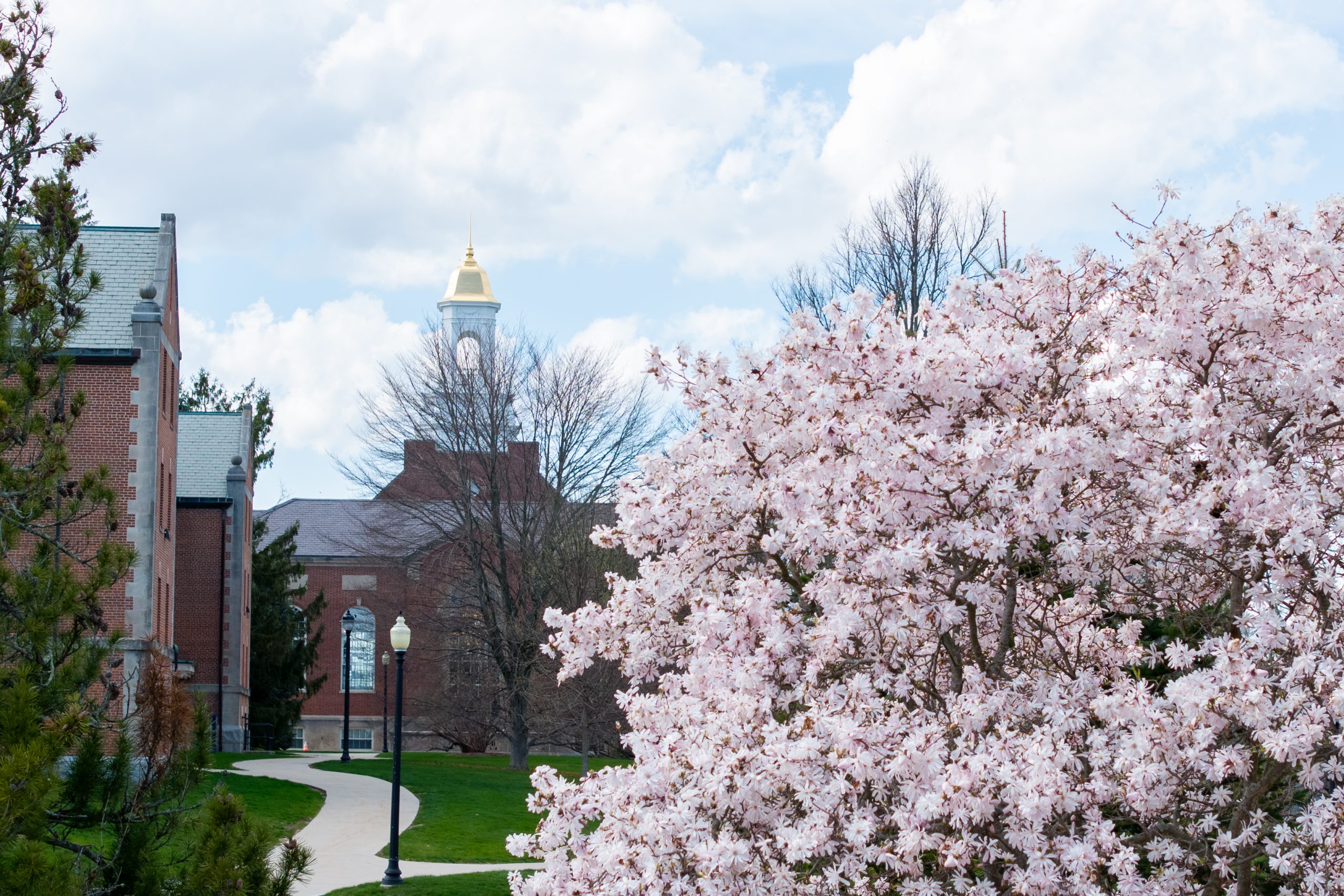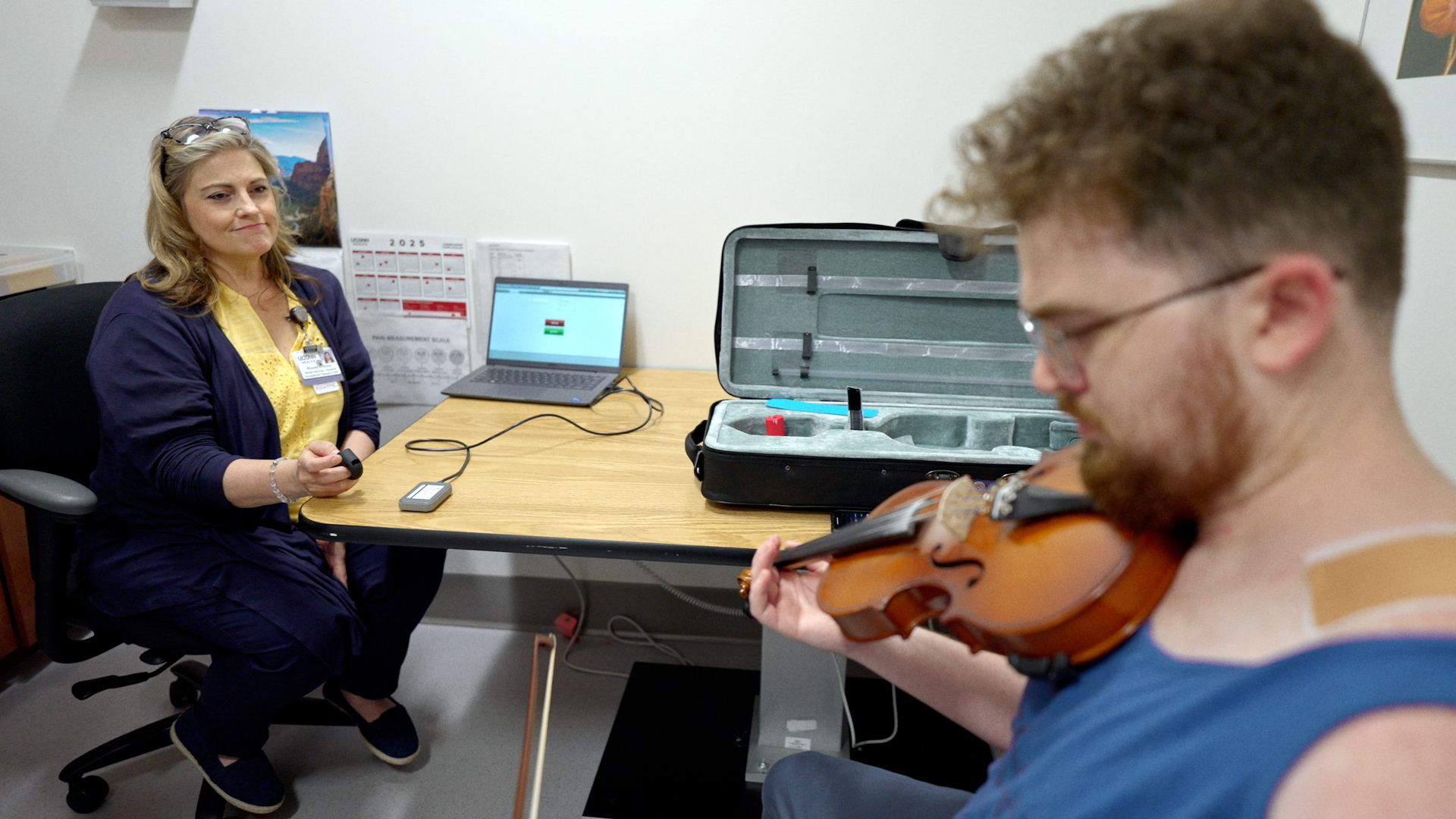
Read the full text of the State of the University address here. Watch the President deliver the address here.
The University of Connecticut has made remarkably rapid progress in areas ranging from new facilities to new faculty, President Susan Herbst said Thursday in her annual State of the University address.
However, she warned those achievements can be quickly undone if University stakeholders don’t commit to a sustained program of further growth and improvement.
“Getting here was hard,” Herbst said in the roughly 40-minute address delivered at the Jorgensen Center for the Performing Arts. “It is much, much easier to slide backward.”
During her remarks, Herbst singled out a number of major initiatives that have made UConn a different university than it was even five years ago. The faculty hiring plan launched three years ago has reduced the student-to-instructor ratio from 18-to-1 to 15.9-to-1, she said, and also allows the University to expand its course offerings.
Herbst also discussed the current freshman class, which is the most academically accomplished in UConn’s 133-year history, and pointed out that this year, UConn will spend nearly $92 million on financial aid, a 183 percent increase from a decade ago, and a crucial metric when 8 out of 10 students receive some form of financial aid.
Watch the video UConn: A Community of Champions here.
One of the newest achievements Herbst discussed was the launch of a campus Master Plan, the result of a process begun last year under the leadership of Master Planner and Chief University Architect Laura Cruickshank and Director of University Planning Beverly Wood.
The plan will be an essential guide to the development of the University as UConn is poised for a period of remarkable growth both in new buildings and new students, thanks to Next Generation Connecticut and other initiatives.
Some of those new facilities include the Innovation Partnership Building in the Tech Park, slated to open in 2017; a new residence hall for STEM living and learning communities, to be completed in 2016; a new Engineering and Science Building, to be finished in 2017; a new Honors Residence Hall; a new production facility for the School of Fine Arts; a new student recreation building; and others.
“The Master Plan will put an end to decades of treating construction and renovation projects as stand-alone undertakings, done without considering a building’s place in the larger campus,” Herbst said.
A draft of the plan will be presented to the Board of Trustees for review at their December meeting. The board will vote on a final draft early next year, once environmental reviews of the plan are complete.
Herbst also highlighted the major transformation happening to UConn Health in Farmington, where the Bioscience Connecticut initiative has already resulted in the construction of the new Jackson Laboratory for Genomic Medicine, which opened this month.
Directly across from the center is a new Outpatient Pavilion, scheduled to open this winter, which will house the Carole and Ray Neag Comprehensive Cancer Center, all of the practices currently located in outdated buildings on the campus, and a new Women’s Health Floor that will include OB/GYN, mammography, and other services.
In her remarks, Herbst also praised the work of the private UConn Foundation, which last year raised more than $81 million in philanthropic gifts and commitments, the highest amount in its 50-year history and a 23 percent increase over the previous year.
The Foundation will now set a fundraising goal of $100 million, Herbst said, with a long-term strategy of eventually increasing UConn’s endowment from $365 million to $1 billion.
That will be essential to ensuring the University’s continued success, Herbst said, as public funding for universities around the country continues to fall.
“The era of states funding the majority of public universities’ budgets has ended, and will likely never return,” she said.
That’s one of the reasons why all of UConn’s recent successes – in attracting classes of record-setting distinction; in hiring world-class faculty members from other top universities; in building and retooling its campuses to meet 21st century needs – are in jeopardy without constant dedication, she said.
“Successful universities are not created instantaneously as if by a lightning bolt and a clap of thunder,” she said. “They are created with consistent, strategic investments made over decades, by many leaders and partners.”
Concluding her remarks on a note of determination, Herbst said it’s within the power of the UConn community – not just on campus, but across the state and even the country – to ensure that kind of effort continues.
“Our future will not be secured by simply trumpeting past successes,” she said. “The future is based on the work we do today, and the opportunities that lie ahead.”



